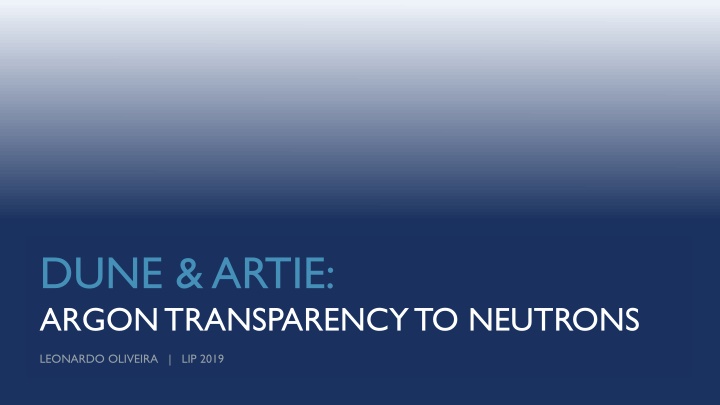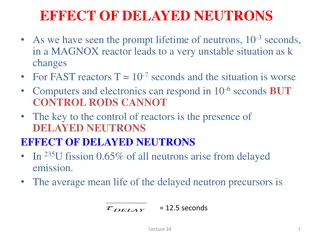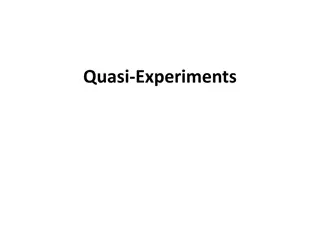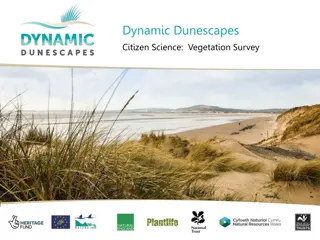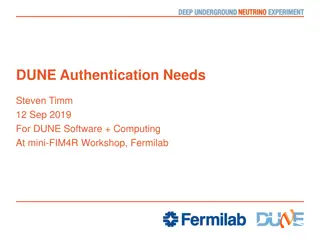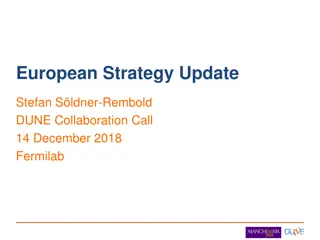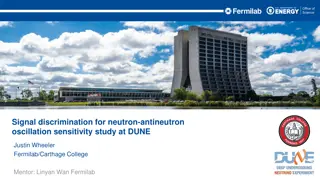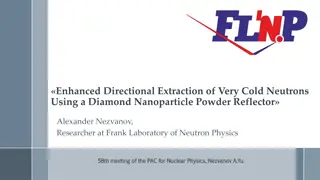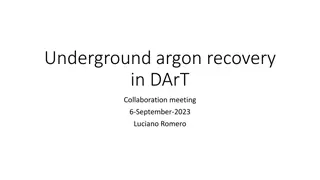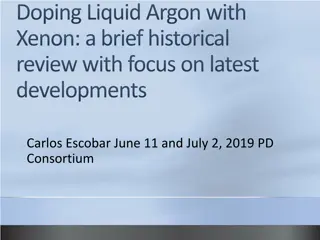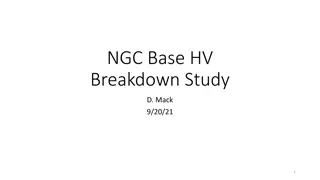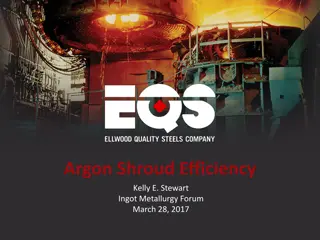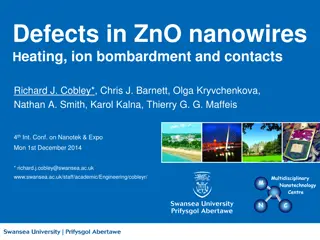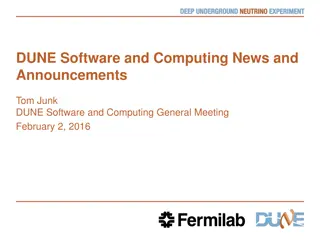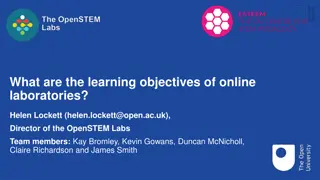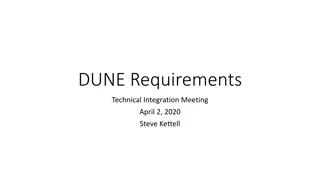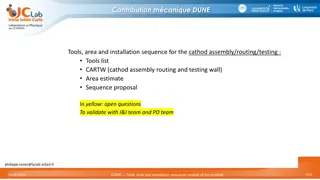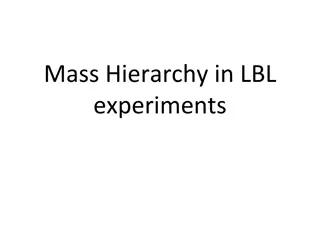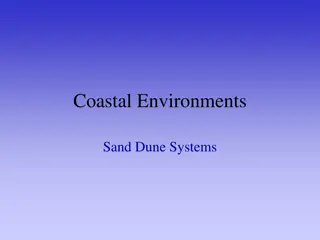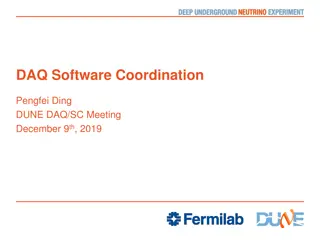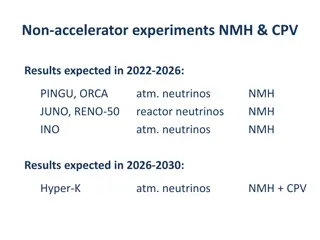Neutrons and Argon in the DUNE and ARTIE Experiments
Detailed overview of experiments like DUNE and ARTIE focusing on the use of liquid argon time projection chambers for studying neutron interactions. Discussions include Pulsed Neutron Source calibration, scattering length measurements, ARTIE setup for resonant transport interactions, and current simulation work using Geant4 for energy reconstruction and noise analysis.
Download Presentation

Please find below an Image/Link to download the presentation.
The content on the website is provided AS IS for your information and personal use only. It may not be sold, licensed, or shared on other websites without obtaining consent from the author.If you encounter any issues during the download, it is possible that the publisher has removed the file from their server.
You are allowed to download the files provided on this website for personal or commercial use, subject to the condition that they are used lawfully. All files are the property of their respective owners.
The content on the website is provided AS IS for your information and personal use only. It may not be sold, licensed, or shared on other websites without obtaining consent from the author.
E N D
Presentation Transcript
DUNE & ARTIE: ARGON TRANSPARENCY TO NEUTRONS LEONARDO OLIVEIRA | LIP 2019
Liquid-Argon Time Projection Chambers Fig. 2: Modified illustration of DUNE setup 3
LIQUID-ARGON TIME PROJECTION CHAMBER Fig. 4: CERN scientist inside the unfinished ProtoDUNE LArTPC Fig. 3: Animation of LArTPC mechanism 4
PULSED NEUTRON SOURCE CALIBRATION Pulsed Neutron Source (PNS) shoots neutrons into LArTPC Elastic scattering distributes neutrons throughout volume Neutron capture reaction with Argon atom Gamma rays provide current profile of the detector PNS calibration relies on large scattering length for Ar Fig. 5: Illustration of PNS calibration mechanism 5
SCATTERING LENGTH Depends on cross-section (isotope-specific) Measured only once for 40-Ar (Winters, 1991) Focused on resonance peaks Not enough precision for anti-resonance peak Anti-resonance peak at 57 keV Predicted by theory, but not yet measured Integral for PNS calibration to actually work! Fig. 6: Total cross section data for Ar 6
ARTIE A rgon R esonant T ransport I nteraction E xperiment Seeks to confirm scattering length for natural Liquid Argon at the 40 70 keV range Fig. 7: Illustration of ARTIE setup 7
CURRENT WORK Simulations using Geant4 Time-energy reconstruction Effect of 150ns noise from pulse Fig. 8: Plots of Initial Energy (dashed red) and Reconstructed Energy (solid blue) 8
CURRENT WORK Fig. 9: Plot of neutron hits at counter Fig. 10: Plot of radial distribution of hits
THANK YOU QUESTIONS?
